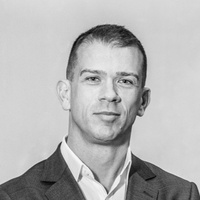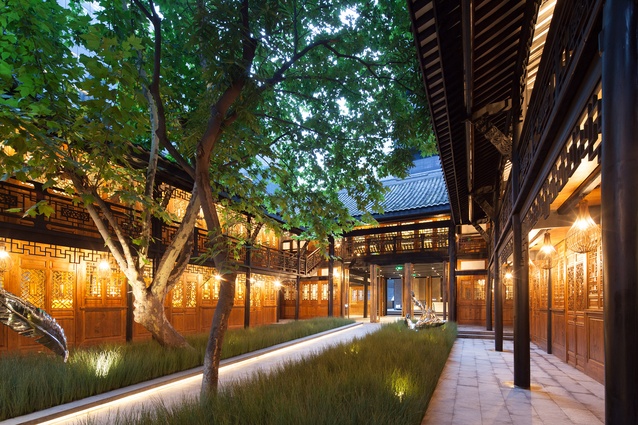“Change is the only certainty”: Simon Lincoln
Make Architects director Simon Lincoln brings his international experience to Aotearoa for the Built to Last conference on 30 October, where he will be giving the closing keynote virtually via livestream during the hybrid, in person/online, one-day event. Lincoln is the director of Make’s Asia Pacific region and has worked on large-scale commercial and urban projects in Australia, Asia, the UK and the UAE. He has worked on projects like Melbourne’s The Link (a multi-purpose passageway for Vicinity Centres’ Chadstone shopping centre) and Sydney’s The Education Building (transforming one of the city’s best-known heritage buildings into a high-end hotel). We caught up with him to hear more on resilient cities, collaboration and more ahead of his talk.
ArchitectureNow: Tell us about how your work experiences have shaped your philosophy on creating resilient buildings?

Simon Lincoln (SL): Resilient buildings are buildings that continually evolve and adapt over time. This includes the very early concept stages of any project, through to completion and into occupation. Designs will change along the way, tenants will require amendments, owners will change their minds, products may become unavailable; change is sometimes the only certainty. Resilience lies in how those changes are addressed. For new buildings, we design with resilience in mind, we look for ways we can build in adaptability at every level, it requires the right team and attitude to create a successful project.
ArchitectureNow: Any important lessons you’ve learned along the way?
SL: Collaboration is so beneficial. We try to never work in silos but always build the best team around us so we ensure we can always imagine what’s possible, and we’ve learned to rigorously interrogate, explore and test ideas to the nth degree. Often we discover new ideas or options through this process.
ArchitectureNow: Have some of your ideas evolved as time has gone on?
SL: Absolutely, yes, and often they are better for it. Ideas should be malleable while maintaining the core vision. We start a project with lots of different options on the table, however through the design process, these get whittled down to the strongest, those that meet the brief and remain true to our vision. This natural process of design evolution tests our ability as designers. It is so important to respond to changing ideas and circumstances.
ArchitectureNow: What role is technology playing in the growth and regeneration of our cities?
SL: For me, one of the most exciting things is how technology is helping us make buildings more efficient and therefore more sustainable. For example, the use of monitoring within our buildings is giving us a wealth of data on where we can fine tune our energy usage and therefore reduce our energy consumption and carbon emissions. We now commonly expect to have smart sensors controlling lighting in buildings, which adjust lighting levels and respond to external conditions with internal or external shading. ‘Agile’ buildings collate building-use data so that the landlord or tenant can optimise their space and make better informed decisions as to how they use it, both for economic and environmental benefit.
ArchitectureNow: How well do you think the built environment sectors are utilising these technologies?
SL: The response is beginning to pick up pace. As we all begin to understand how these technologies can be utilised, the interfaces become more intuitive and the devices more available. There is also an upward demand from the younger generations that are wanting more integration of technology within our built environment.
ArchitectureNow: Does your approach to designs that last change from country to country, or context to context? Do some principles always stay the same?
SL: Good design, which often equals resilient design, should respond to its surroundings. So, yes, it naturally takes on a different form, material, or scale depending on its context. Every site is different and will present different constraints. It tends to be the more humanistic side of design that remains consistent: a positive response to natural light is important, connection to biophilia, provision of shelter, the feeling of safety and, of course, a sense of delight.
ArchitectureNow: What can New Zealand designers specifically take on board? Are there things we could improve? Things we’re doing particularly well?
SL: I am continually impressed by how well grounded in location New Zealand architecture is. From small regional infrastructure projects to larger commercial or public buildings, there is an emphasis on architecture that is of, and for, its location – which is to be applauded.
ArchitectureNow: Without giving too much away, what can we expect from your Built to Last keynote? Why should we tune in?
SL: From a worldwide top ten hotel in China to a once in a lifetime mixed-use development in London, I’ll look at how resilient architecture forms the setting for placemaking within our cities. I will share with you our journey in creating these spaces.
Click here to buy your tickets for the Build to Last conference, which takes place on 30 October 2020 at the Cordis Hotel in Auckland and will also be streamed live. Built to Last is organised by the New Zealand Institute of Building.










